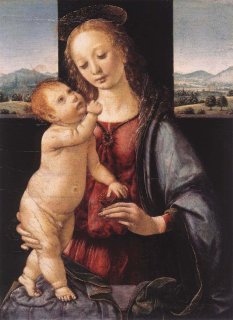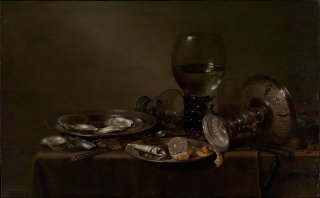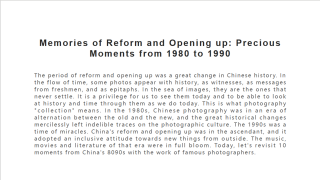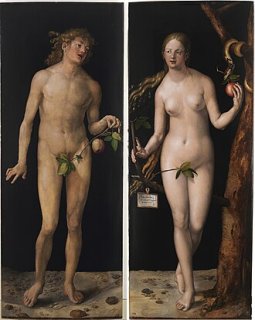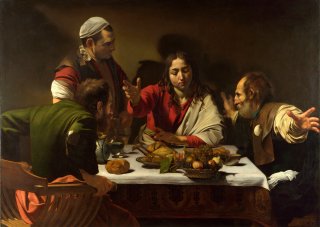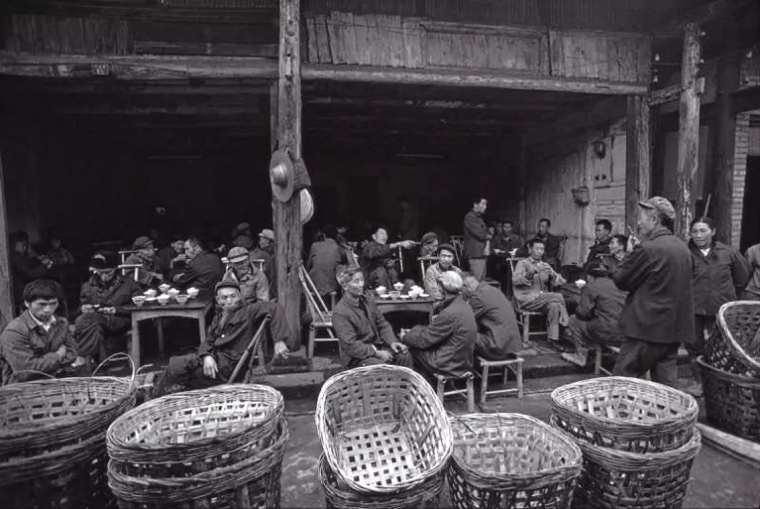
This image captures the daily activities of tea houses and tea farmers in rural China. It also illustrates the shifts in the social and economic landscape of the region at this time, as well as the changes in the living standards of the populace. The tea sector in rural areas has expanded since the reform and opening up, and the living conditions of tea growers have also improved. With its accurate, nuanced, and in-depth observation, Chen Jin's (陈锦) "Tea House" (茶馆) photography captures the life of rural tea stores and tea farmers against the backdrop of reform and opening up, enabling viewers to sense the shifts in a certain age and the living situations of its subjects. Since the reform and opening up, teahouse culture has expanded, the number of teahouses has steadily grown, and in Sichuan, the teahouse has evolved from a basic "leisure space" to an organic carrier of the personality and spirit of the locals. Even though the little, run-down ancient teahouse is filled with people, they converse, laugh, unwind, and enjoy the pleasures that tea culture has to offer. They lead a straightforward, pleasant life. Tea drinking then evolved into a way of life. "One of the iconic works of the new era of Chinese photography" is how others have described Teahouse. This work has historical and cultural significance in addition to reflecting the social reality of the time.
